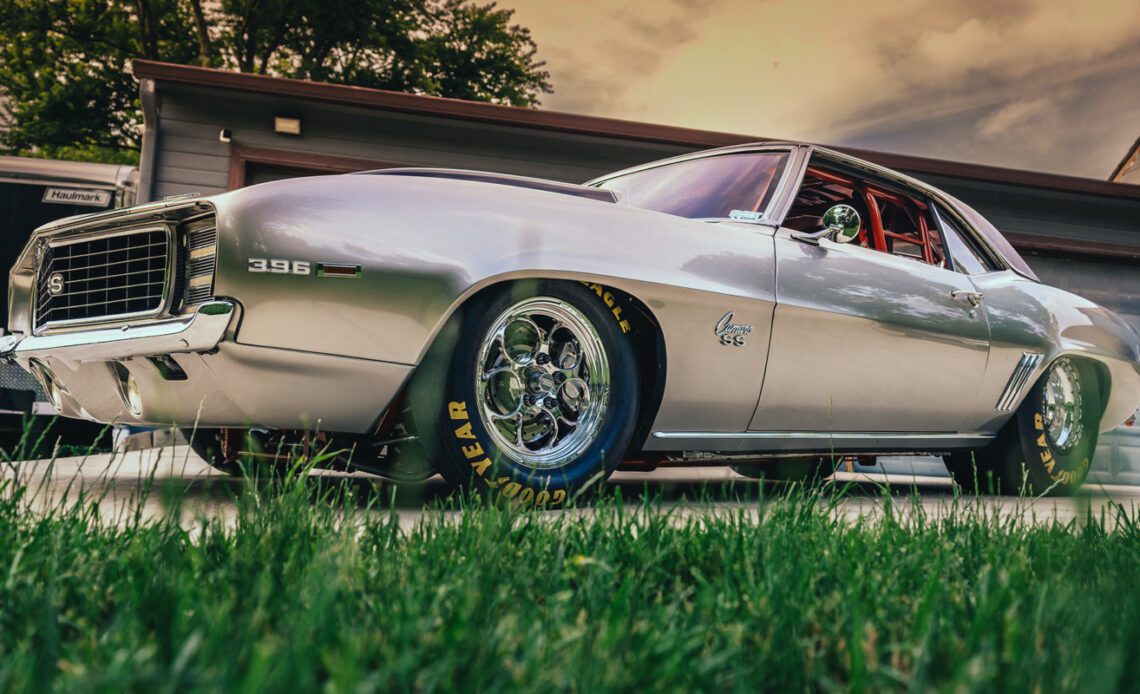Mike Burns’ passion has always been the first-generation Camaro. His first car was a 1969 Camaro when he was 16 years old. Yes, he has created some high-end builds over the years, including Chevelles, GTOs, and a trick 1967 Chevy one-ton dually, but the first-generation Camaro has always had a special place in his heart.
In particular, Burns had his eyes on a friend’s X-22 code Camaro. He continuously bothered his buddy — a bit jokingly — to sell him the car. On one fateful New Year’s Eve, the friend mentioned he would sell him the car, and the Camaro bug bit him once again — hard.
“This Camaro had always been a race car for as long as I remember,” said Burns. “It was a back-half car with a cage and very straight. My friend owned it and allowed it to sit in a pole barn for almost 15 years. It drove me crazy because I thought about what I would do more than once if I could get my hands on it.”
The interior is as slick as the body. Kierkegaard racing seats, Autometer gauges, and a Grant steering wheel are the first things you’ll notice, along with a Hurst Quarter Stick shifter set upon panels created from red carbon-fiber. Adding to the look is a headliner created from similar red carbon-fiber material.
Burns didn’t let the New Year’s eve celebration do the talking, as he knew his friend had done too much celebrating, if you know what we mean. Burns recalls, “I gave it a couple of days to make sure he really wanted to sell. We visited again and agreed on a price, and I scored the Camaro I had always wanted.”
Burns was laughing when he told us, “Surprisingly, after sitting for so long, we got the car to fire up, bought five gallons of race gas, and took it to the local track with no issues.” But right after that folly, in Burns’ garage, it was time to undergo a major rebuild, just like he had imagined many times over in his head.
With the intent of placing far more horsepower under the hood, a three-year effort was underway. Burns had an NHRA chassis inspector stop by to tell him what it would take to achieve a 6.0 chassis certification, and then he went to work.
Brodix heads, intake, and valve covers sit on top of a 496 cubic-inch big-block Chevy; a Lunati crankshaft, rods, 14.5:1 pistons, and camshaft make up the main internals. American Racing headers, an Aerospace Components vacuum pump, DaVinci carburetor, and a Hamburger pan round out the powerplant. There is a larger engine in the immediate works, but Burns…
Click Here to Read the Full Original Article at DragzineDragzine…

